Last week, the U.S. Department of Health and Human Services (HHS) detailed several new actions that we are taking to address the country’s opioid crisis. One of these actions was publishing the final rule to increase the patient limit for practitioners prescribing buprenorphine. This rule aims to improve access to buprenorphine, which is prescribed along with behavioral health services as part ofmedication-assisted treatment (MAT). I am proud to say that SAMHSA was given the responsibility of leading the development of this regulation along with our HHS partners. Our goals were to expand access to buprenorphine, increase the quality of treatment for opioid use disorders; and limit the diversion of buprenorphine. This rule helps in accomplishing all of these goals.
The dependence on opioids, such as heroin, fentanyl, and prescription pain medication, is a serious and increasing public health concern. In 2014, 18,893 overdose deaths involved prescription opioids and 10,574 involved heroin. Underlying many of these deaths is an untreated opioid use disorder. In that same year, more than 2.2 million people met the diagnostic criteria for an opioid use disorder. There is an urgent need to increase access to treatment. Research has shown that a combination of medication and behavioral health services can successfully treat these disorders and, for many people, MAT can help sustain recovery.
Buprenorphine-based MAT is governed by the Controlled Substances Act (CSA), as amended by the Drug Addiction Treatment Act of 2000 (DATA 2000). Currently, qualified physicians obtain a waiver to prescribe buprenorphine, with an initial treatment limit of 30 patients per practitioner. After one year practitioners can file a request to treat up to 100 patients.
The new regulation will allow physicians to treat up to 275 patients once their request is approved. There are two pathways through which doctors can become eligible to increase their patient limit to 275: 1) by having additional credentialing in addiction medicine or addiction psychiatry from a specialty medical board and/or professional society, or 2) by working in a qualified practice setting, which provides comprehensive treatment associated with MAT.
Additionally, during emergency situations, other practitioners who are approved to treat up to 100 patients are eligible to raise their patient limit up to 275 to ensure continuity of care for patients who might otherwise not have access to treatment at such a critical time.
The new regulation will be effective 30 days after publication in the federal register. We expect this regulation to have a swift and significant impact on the opioid crisis even as we continue to expand the number of waivered practitioners through efforts such as the Providers’ Clinical Support System Medication Assisted Treatment (PCSS-MATExternal Web Site Policy) program. The SAMHSA-sponsored program has mentored over 4,500 health professionals through waiver trainings courses and over 28,000 health professionals through online and webinar courses. Currently PCSS-MAT is working with 14 targeted states to provide waiver training for buprenorphine prescribing. PCSS-MAT also facilitates statewide discussions and collaboration across organizations to overcome barriers in the use of MAT.
At SAMHSA, we recognize that behavioral health services and support are critical to promoting wellness, building community and individual resilience, and fostering recovery. That’s why we will continue to find ways to expand the use of MAT for treatment of opioid use disorders. While this week’s advancements are important in the ongoing effort to increase access to treatment, it is vital that we find additional resources for the continuum of needed services, such as the President’s proposed $1.1 billion budget request to combat the opioid crisis. We remain committed to providing meaningful and evidence-based strategies to help our fellow Americans struggling with addiction.




